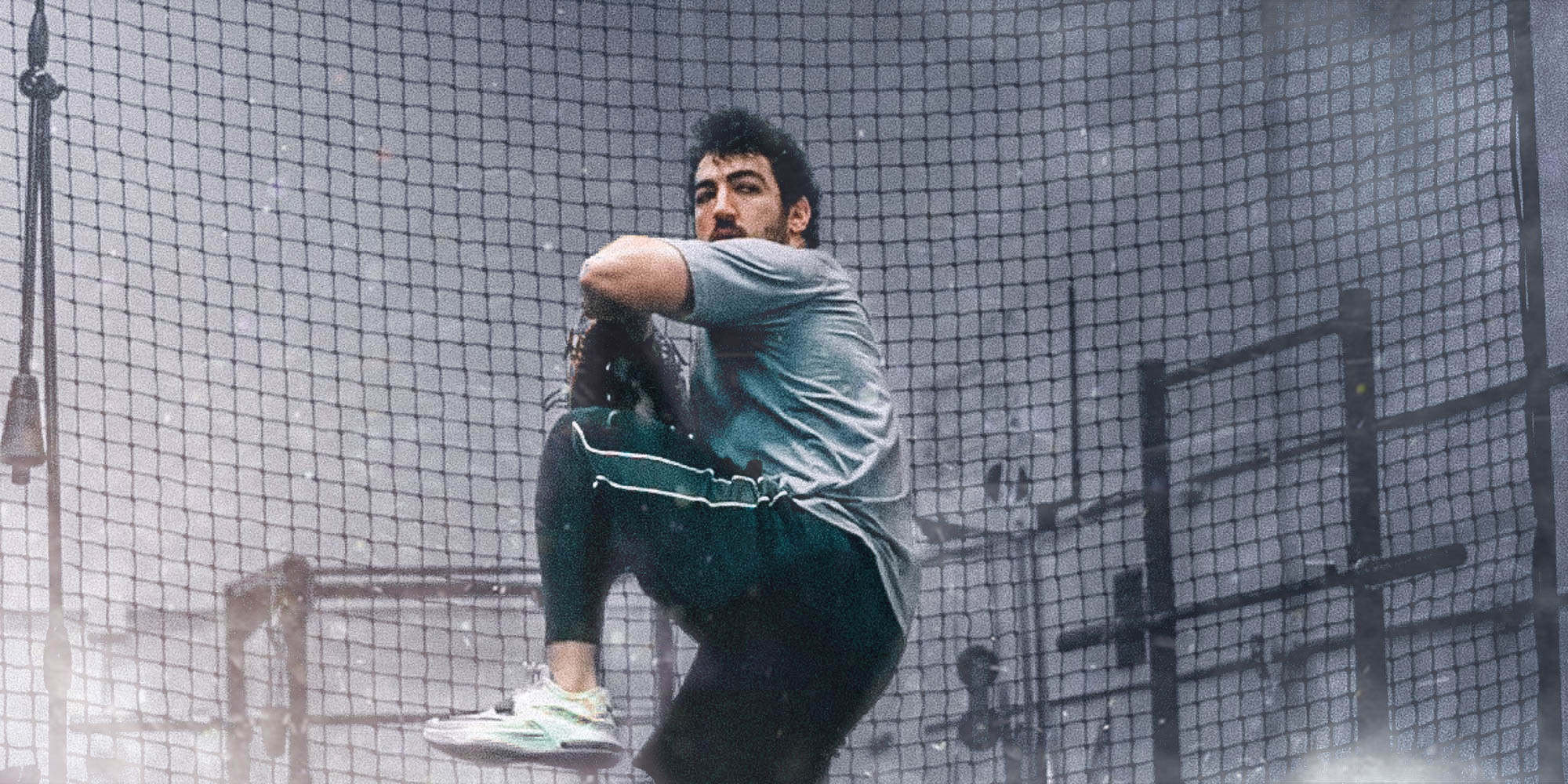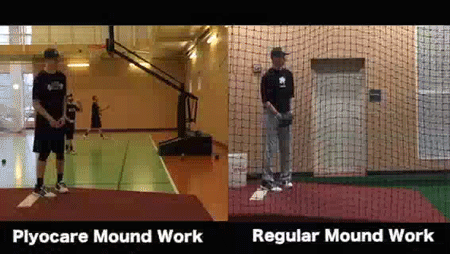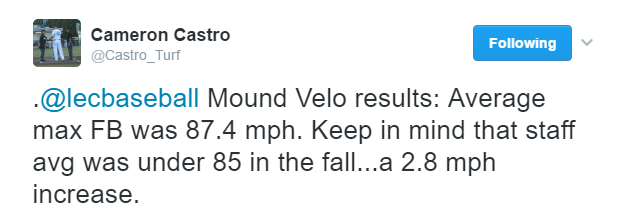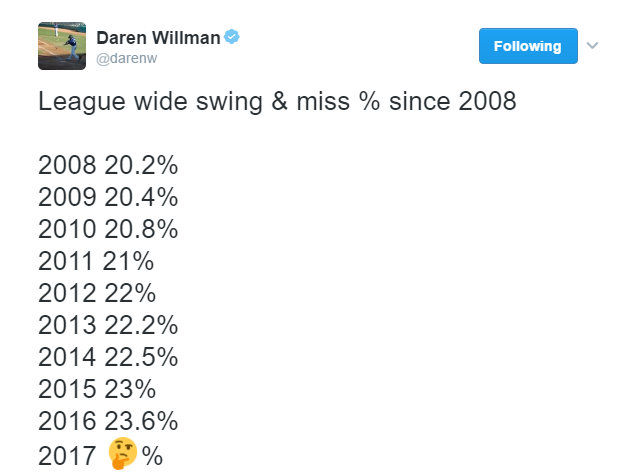Coaches Series: Blending to the Mound

This is the second of several articles written by former Driveline trainer and now Head Coach at Lake Erie College, Cam Castro, detailing the application of Driveline’s programs and equipment at the small-college level (Twitter: @Castro_Turf)
Rethinking January Bullpens
How athletes prepare for their season can truly dictate their success, whether it’s summer leading into fall, fall leading into winter, or, arguably most important for the college athlete, winter leading into spring. In my last post, Winter Break Training Program for Pitchers, I touched on the topic of training college staff over the course of winter break. Typically after these athletes return to campus and team practices resume, they have just over a month to prep for game one. Understandably, many coaches are in a hurry to start throwing bullpens.
They’re anxious to get their game-one starter prepared to throw over 80 pitches in an opening series where they’re probably going to play at least two-to-three different lineups. Coaches have to see who their best nine are, I get it. But if you’re like me, you’ve started thinking that something about that just doesn’t add up.
Now, don’t get me wrong; I used to be that coach—sitting down to schedule out five weeks of bullpens and simulated games in the cage. But I’m acting under a different assumption now. I believe that our athletes’ arm-fitness levels are more than adequate to be successful on opening weekend. There’s just one missing piece: re-introducing them to the mound, naturally. In my mind, this doesn’t have to be in the form of a four-hour practice on Saturday so that more than 15 guys can throw 60 pitches each.
Once they get back on campus in January, why would I think that the only way to get them ready to pitch against what is likely an out-of-conference and out-of-region opponent is to start chucking balls down the hill immediately?
If I think all it takes to prepare to pitch on opening weekend is throwing bullpens, then why did we just spend the past four-to-five months on things like movement screens, long toss, mechanical improvements, velocity training, and weight training? My point here is that if I think throwing pens is all that matters, why have we done everything else but that up until now?
This year, our athletes are spending over four weeks on blending to the mound; it’s not quite the baptismal by fire some coaches exhibit. They are spending considerable time blending Movement Patterns, Intent, and Command to the slope—all before ever throwing a live to a hitter, let alone a side session to a catcher.
Blending Movement Patterns
Between my time working at Driveline and instituting their protocols in the wild, I’ve seen many athletes struggle to translate their movements in Plyo Ball ® drills to maximal or even submaximal effort on the mound. I remember when it first clicked for us about how to better accomplish this:
Why not throw Plyo Ball ® off the mound? It was so simple, so profound, and such a “Duh!” moment—all thanks to Scott Brown (Vanderbilt PC) at ABCA 2016.
After our athletes returned to campus, we spent seven-to-ten days reintroducing them to all the necessary implements, because some had been sent home over winter break with either just Green-Gray Plyo Ball ® or a Black Plyo Ball ® and set of Leather Weighted Baseballs.
After what we called a “mini on-ramp,” we introduced the “Plyo Ball ® Pen” and spent two weeks blending Plyo Ball ® drill movement to the slope. Mainly focusing on the Roll-In Drill, Rockers, and Walking Windups. I let the athletes determine their own RPE: some wanted to let it rip, and others wanted to feel out the strange surface that they hadn’t been on in over three months. I was fine either way.
Our goal here was to achieve quality movement patterns, re-adjust to the mound, and do video analysis, which we then compared to their flatground Plyo Ball ® work as well as video taken from bullpens in the fall season.
Blending Intent
Recently we threw our first Mound Velo Session, and the results were pretty good I’d say:
The focus was simple, pure, unfiltered, and unadulterated intent. That was the name of the game. Athletes threw ten-to-fifteen pitches in three different sets at 100% RPE. We paired them up with a partner for competition and they alternated sets. After getting one-to-two throws at 75-80% RPE, they let it fly.
We set up a net 30 feet from the mound. No Target. No Hitter in the box. Just a net to take their frustration out on and a radar gun bearing judgment.
For more info on how to utilize Mound Velos not just as a training tool but as an in-season asset, check out Travis Hergert’s article on Max Intent Bullpens.
I can’t stress enough the importance of video analysis here too. I encourage you to compare video not only taken at different points throughout the year (fall vs. spring) but also at different intent levels. If Movement Patterns aren’t as efficient as you’d like, don’t freak out and abandon ship. Modify, tweak, and alter that specific athlete’s training program. Maybe he needs a different or more specific focus (e.g., glove side action, front leg blocking, leveraging his trunk, which are all apart of movement specific Hacking the Kinetic Chain programs).

Blending Command
The last piece to our blend program is command training. With the climbing swing-and-miss rates at the highest level of baseball, we put together a command program similar to what you would find in the updated content of Hacking the Kinetic Chain.
Each athlete throws anywhere from 15-20 flat ground throws to a target using a variation of weighted balls as well as different desired locations. What we’re doing here is asking the athlete to produce the same result while alternating the stimulus.
After all, almost each and every pitch thrown in a game is a different situation—a different hitter, different count, different pitch type. Are there runners on base, are you in the stretch, in the windup? What inning is it? What’s the score? The list of scenarios in this game are endless—one of the things that make it great.
But regardless of what the situation, stimulus, or scenario is, we ask our athletes to produce the same result: strikes. So how do we train that? We’re indoors, without cleats, without dirt, without fans and jeering benches. What we do is we alter the implement. Throw to throw, pitch to pitch, and we chart the results.
We do all this prior to ever throwing to hitters, and even then I highly doubt that any of of our athletes will throw north of 40 pitches. In my mind, 80-100 pitch bullpens aren’t what get an athlete ready for game one. Rather, it’s translating their flat ground movements to the slope as well as their intent from high-output exercises like pulldowns, and of course, their feel for commanding the strike zone.
We do all this in an attempt to re-adjust to the mound and prepare the athlete to compete on opening day. But more importantly, we want them to be at their best when it really matters, in-conference and in-region games. This blending program allows us to do that.
Movement Patterns, Intent and Command. Those are the makings of truly effective mound work.
We’ve published other articles that are directed towards coaching, check them out here!
Comment section
Add a Comment
You must be logged in to post a comment.


Rob -
When using Plyo Care ball off the mound as you begin the blending process which ones and is there any guidelines to follow i.e. Number and or order thrown? Thanks
Driveline Baseball -
The specific programming guidelines are laid out in our book, Hacking the Kinetic Chain. As you can see from the figure above, we move the roll-ins, rockers, and walking-windups to the mound for one day. The reps are similar to the reps we perform with those drills regularly.
Keith Plemons -
I have 2 questions. What is the shoulder tube? And what is RPE?
Driveline Baseball -
Thanks for the questions, Keith! The shoulder tube is a tool we use daily for warm-up and recovery. You can find them for $99 on Amazon (Shoulder Tube). Here’s a video with a few of the exercises we do (https://www.youtube.com/watch?v=FyJP6-_PRl8).
RPE stands for Rate of Perceived Exertion, which is essentially the level of effort put into a movement. 100% would be trying to throw as hard as possible, not holding back at all.
J Allen -
So you normally see a decrease in velo in the winter workout phase?
Pulldowns: The What, Why, and When - Driveline Baseball -
[…] Winter: Velocity building (pulldowns/mound velos) / transition to mound work […]